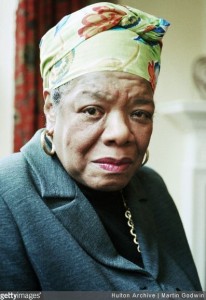 The professionals on a team are, generally speaking, the two attorneys, a neutral financial professional, a neutral child specialist, and a neutral divorce coach. Although the inclusion of financial and mental health professionals in the divorce process is nothing new, the manner in which they are used in the Collaborative process is unique. The attorneys’ roles are different in Collaboration, as well. While each spouse retains his or her own attorney, the attorneys work together to help the clients achieve an outcome that works for the entire family. The attorneys give legal advice to their individual clients, but more importantly, they help their clients realize what their interests and goals are. The objective of Collaboration is to get to a place where everyone is OK (a win-win) rather than a win-lose. The attorneys are trained in the Collaborative model and interest-based negotiation.
A financial neutral helps the divorcing couple with property division and cash flow. Financial neutrals are financial experts and are CPAs, CDFAs, and CFSs who are trained in the Collaborative process and who understand the legal process.
A child specialist is a neutral who helps the couple with creating a comprehensive and viable parenting plan. The child specialist is a therapist who is also trained in the Collaborative process. The child specialist is the voice of the children and not only helps the children during the divorce process, but helps parents help their children during this transition.
A divorce coach is also a therapist and a neutral in this process. The coach’s role is to the help the couple communicate better. It is important for each spouse to have a voice in this process and the coach can help with that. In high conflict cases, a coach helps the process move along more smoothly.
Although it seems like there are a lot of professionals involved in Collaboration, every professional has a specific role. In a non-collaborative case, the attorneys are acting as financial advisor, child specialist, and coach. And while attorneys can help with those pieces of the case, attorneys are not experts in those areas. In the Collaborative process, you get the best advice from the various professionals who are trained to help you reach a settlement. Consequently, a Collaborative team CAN help you avoid the divortex!
The professionals on a team are, generally speaking, the two attorneys, a neutral financial professional, a neutral child specialist, and a neutral divorce coach. Although the inclusion of financial and mental health professionals in the divorce process is nothing new, the manner in which they are used in the Collaborative process is unique. The attorneys’ roles are different in Collaboration, as well. While each spouse retains his or her own attorney, the attorneys work together to help the clients achieve an outcome that works for the entire family. The attorneys give legal advice to their individual clients, but more importantly, they help their clients realize what their interests and goals are. The objective of Collaboration is to get to a place where everyone is OK (a win-win) rather than a win-lose. The attorneys are trained in the Collaborative model and interest-based negotiation.
A financial neutral helps the divorcing couple with property division and cash flow. Financial neutrals are financial experts and are CPAs, CDFAs, and CFSs who are trained in the Collaborative process and who understand the legal process.
A child specialist is a neutral who helps the couple with creating a comprehensive and viable parenting plan. The child specialist is a therapist who is also trained in the Collaborative process. The child specialist is the voice of the children and not only helps the children during the divorce process, but helps parents help their children during this transition.
A divorce coach is also a therapist and a neutral in this process. The coach’s role is to the help the couple communicate better. It is important for each spouse to have a voice in this process and the coach can help with that. In high conflict cases, a coach helps the process move along more smoothly.
Although it seems like there are a lot of professionals involved in Collaboration, every professional has a specific role. In a non-collaborative case, the attorneys are acting as financial advisor, child specialist, and coach. And while attorneys can help with those pieces of the case, attorneys are not experts in those areas. In the Collaborative process, you get the best advice from the various professionals who are trained to help you reach a settlement. Consequently, a Collaborative team CAN help you avoid the divortex!
In parts 1 and 2, we defined vortex as:
1) a whirling mass of water or air that sucks everything near it towards its center;
2) a place or situation regarded as drawing into its center all that it surrounds, and hence, being inescapable or destructible.
As discussed in previous months, the “divortex” can be avoided by choosing the Collaborative Process. Prior articles describe what Collaboration is – it is a process that avoids court and may use a team of experts to help clients create the best settlement option possible. The professionals on a team are, generally speaking, the two attorneys, a neutral financial professional, a neutral child specialist, and a neutral divorce coach. Although the inclusion of financial and mental health professionals in the divorce process is nothing new, the manner in which they are used in the Collaborative process is unique. The attorneys’ roles are different in Collaboration, as well. While each spouse retains his or her own attorney, the attorneys work together to help the clients achieve an outcome that works for the entire family. The attorneys give legal advice to their individual clients, but more importantly, they help their clients realize what their interests and goals are. The objective of Collaboration is to get to a place where everyone is OK (a win-win) rather than a win-lose. The attorneys are trained in the Collaborative model and interest-based negotiation.
A financial neutral helps the divorcing couple with property division and cash flow. Financial neutrals are financial experts and are CPAs, CDFAs, and CFSs who are trained in the Collaborative process and who understand the legal process.
A child specialist is a neutral who helps the couple with creating a comprehensive and viable parenting plan. The child specialist is a therapist who is also trained in the Collaborative process. The child specialist is the voice of the children and not only helps the children during the divorce process, but helps parents help their children during this transition.
A divorce coach is also a therapist and a neutral in this process. The coach’s role is to the help the couple communicate better. It is important for each spouse to have a voice in this process and the coach can help with that. In high conflict cases, a coach helps the process move along more smoothly.
Although it seems like there are a lot of professionals involved in Collaboration, every professional has a specific role. In a non-collaborative case, the attorneys are acting as financial advisor, child specialist, and coach. And while attorneys can help with those pieces of the case, attorneys are not experts in those areas. In the Collaborative process, you get the best advice from the various professionals who are trained to help you reach a settlement. Consequently, a Collaborative team CAN help you avoid the divortex!
The professionals on a team are, generally speaking, the two attorneys, a neutral financial professional, a neutral child specialist, and a neutral divorce coach. Although the inclusion of financial and mental health professionals in the divorce process is nothing new, the manner in which they are used in the Collaborative process is unique. The attorneys’ roles are different in Collaboration, as well. While each spouse retains his or her own attorney, the attorneys work together to help the clients achieve an outcome that works for the entire family. The attorneys give legal advice to their individual clients, but more importantly, they help their clients realize what their interests and goals are. The objective of Collaboration is to get to a place where everyone is OK (a win-win) rather than a win-lose. The attorneys are trained in the Collaborative model and interest-based negotiation.
A financial neutral helps the divorcing couple with property division and cash flow. Financial neutrals are financial experts and are CPAs, CDFAs, and CFSs who are trained in the Collaborative process and who understand the legal process.
A child specialist is a neutral who helps the couple with creating a comprehensive and viable parenting plan. The child specialist is a therapist who is also trained in the Collaborative process. The child specialist is the voice of the children and not only helps the children during the divorce process, but helps parents help their children during this transition.
A divorce coach is also a therapist and a neutral in this process. The coach’s role is to the help the couple communicate better. It is important for each spouse to have a voice in this process and the coach can help with that. In high conflict cases, a coach helps the process move along more smoothly.
Although it seems like there are a lot of professionals involved in Collaboration, every professional has a specific role. In a non-collaborative case, the attorneys are acting as financial advisor, child specialist, and coach. And while attorneys can help with those pieces of the case, attorneys are not experts in those areas. In the Collaborative process, you get the best advice from the various professionals who are trained to help you reach a settlement. Consequently, a Collaborative team CAN help you avoid the divortex!
 The professionals on a team are, generally speaking, the two attorneys, a neutral financial professional, a neutral child specialist, and a neutral divorce coach. Although the inclusion of financial and mental health professionals in the divorce process is nothing new, the manner in which they are used in the Collaborative process is unique. The attorneys’ roles are different in Collaboration, as well. While each spouse retains his or her own attorney, the attorneys work together to help the clients achieve an outcome that works for the entire family. The attorneys give legal advice to their individual clients, but more importantly, they help their clients realize what their interests and goals are. The objective of Collaboration is to get to a place where everyone is OK (a win-win) rather than a win-lose. The attorneys are trained in the Collaborative model and interest-based negotiation.
A financial neutral helps the divorcing couple with property division and cash flow. Financial neutrals are financial experts and are CPAs, CDFAs, and CFSs who are trained in the Collaborative process and who understand the legal process.
A child specialist is a neutral who helps the couple with creating a comprehensive and viable parenting plan. The child specialist is a therapist who is also trained in the Collaborative process. The child specialist is the voice of the children and not only helps the children during the divorce process, but helps parents help their children during this transition.
A divorce coach is also a therapist and a neutral in this process. The coach’s role is to the help the couple communicate better. It is important for each spouse to have a voice in this process and the coach can help with that. In high conflict cases, a coach helps the process move along more smoothly.
Although it seems like there are a lot of professionals involved in Collaboration, every professional has a specific role. In a non-collaborative case, the attorneys are acting as financial advisor, child specialist, and coach. And while attorneys can help with those pieces of the case, attorneys are not experts in those areas. In the Collaborative process, you get the best advice from the various professionals who are trained to help you reach a settlement. Consequently, a Collaborative team CAN help you avoid the divortex!
The professionals on a team are, generally speaking, the two attorneys, a neutral financial professional, a neutral child specialist, and a neutral divorce coach. Although the inclusion of financial and mental health professionals in the divorce process is nothing new, the manner in which they are used in the Collaborative process is unique. The attorneys’ roles are different in Collaboration, as well. While each spouse retains his or her own attorney, the attorneys work together to help the clients achieve an outcome that works for the entire family. The attorneys give legal advice to their individual clients, but more importantly, they help their clients realize what their interests and goals are. The objective of Collaboration is to get to a place where everyone is OK (a win-win) rather than a win-lose. The attorneys are trained in the Collaborative model and interest-based negotiation.
A financial neutral helps the divorcing couple with property division and cash flow. Financial neutrals are financial experts and are CPAs, CDFAs, and CFSs who are trained in the Collaborative process and who understand the legal process.
A child specialist is a neutral who helps the couple with creating a comprehensive and viable parenting plan. The child specialist is a therapist who is also trained in the Collaborative process. The child specialist is the voice of the children and not only helps the children during the divorce process, but helps parents help their children during this transition.
A divorce coach is also a therapist and a neutral in this process. The coach’s role is to the help the couple communicate better. It is important for each spouse to have a voice in this process and the coach can help with that. In high conflict cases, a coach helps the process move along more smoothly.
Although it seems like there are a lot of professionals involved in Collaboration, every professional has a specific role. In a non-collaborative case, the attorneys are acting as financial advisor, child specialist, and coach. And while attorneys can help with those pieces of the case, attorneys are not experts in those areas. In the Collaborative process, you get the best advice from the various professionals who are trained to help you reach a settlement. Consequently, a Collaborative team CAN help you avoid the divortex! 









